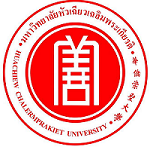กรุณาใช้ตัวระบุนี้เพื่ออ้างอิงหรือเชื่อมต่อรายการนี้:
https://has.hcu.ac.th/jspui/handle/123456789/2835| ชื่อเรื่อง: | การวิเคราะห์ภาษาในโฆษณาเสื้อผ้า |
| ชื่อเรื่องอื่นๆ: | An Analysis of Language in Clothes Advertising |
| ผู้แต่ง/ผู้ร่วมงาน: | นาถนภา นวลโพธิ์ นพรัตน์ ธนานุรักษากุล Nartnapa Nualpoh Noparat Tananuraksakul Huachiew Chalermprakiet University. Faculty of Liberal Arts. Student of Master of Liberal Arts. Huachiew Chalermprakiet University. Faculty of Liberal Arts |
| คำสำคัญ: | Clothing and dress Advertising โฆษณา -- เสื้อผ้า การตัดสินใจ Decision making ภาษาโฆษณา |
| วันที่เผยแพร่: | 2017 |
| สำนักพิมพ์: | มหาวิทยาลัยหัวเฉียวเฉลิมพระเกียรติ |
| แหล่งอ้างอิง: | วารสารศิลปศาสตร์ปริทัศน์ 12, 23 (มกราคม-มิถุนายน 2560) : 1-10. |
| บทคัดย่อ: | บทความงานวิจัยนี้มีวัตถุประสงค์หลักเพื่อศึกษาสาเหตุที่ทำให้เอชแอนด์เอ็มมียอดขายเสื้อผ้าสูงกว่ายูนิโคลระหว่างปีพุทธศักราช 2554-2557 โดยมีคำถามวิจัย 3 ข้อดังนี้ 1) ภาษาที่ใช้ในโฆษณาใบปลิวออนไลน์ของยูนิโคลและเอชแอนด์เอ็มสามารถชักจูงการตัดสินใจซื้อของลูกค้าหรือไม่ 2) ภาษาโฆษณาสามารถชักจูงการตัดสินใจซื้อของลูกค้าอย่างไร และ 3) ความแตกต่างทางด้านภาษาที่ใช้ในโฆษณาใบปลิวออนไลน์ของทั้งสองยี่ห้อมีอะไรบ้าง โดยศึกษาจากใบปลิวโฆษณาออนไลน์ของยูนิโคลและเอชแอนด์เอ็มที่ถูกเผยแพร่ระหว่างปีพุทธศักราช 2554-2557จากคลังข้อมูลย้อนหลังของเว็บไซต์ (http://www.archive.org) จำนวน 50 คู่ แล้วนำมาวิเคราะห์ด้วยทฤษฏีสภาวะเกิดก่อน (presupposition) ซึ่งมีทั้งหมด 6 วิธี แต่ผู้วิจัยเลือก 1 วิธี ที่เรียกว่า existential presupposition หมายถึง ข้อสมมุติร่วมระหว่างผู้ทำโฆษณาและผู้อ่านโฆษณา ซึ่งมีวิธีการตีความภาษาด้วยการใช้การอนุมานระดับต่ำ ประกอบด้วยคำเหล่านี้ the,this, these, your, our และการใช้ not ทดสอบสภาวะเกิดก่อนของภาษาโฆษณา ผลการวิเคราะห์ข้อมูลสรุปได้ว่า ภาษาที่ใช้ในการโฆษณาของทั้งสองยี่ห้อมีอิทธิพลต่อลูกค้าในการตัดสินใจซื้อผลิตภัณฑ์ เนื่องจากภาษาโฆษณาของทั้งสองยี่ห้อมีข้อสมมุติร่วมระหว่างผู้ทำโฆษณากับผู้อ่านโฆษณา อย่างไรก็ตาม ถึงแม้ว่า ยูนิโคลมีข้อสมมุติร่วมมากกว่าเอชแอนด์เอ็มและเน้นการใช้ภาษาที่แสดงให้เห็นถึงการออกแบบผลิตภัณฑ์ที่ดูธรรมดาและคงคุณภาพของผลิตภัณฑ์ แต่ภาษาโฆษณาของยูนิโคลไม่สามารถชักจูงลูกค้าให้ซื้อผลิตภัณฑ์ได้มากกว่าเอชแอนด์เอ็ม ทั้งนี้อาจเป็นได้ว่าภาษาโฆษณาของเอชแอนด์เอ็มมีความแตกต่างจากยูนิโคล กล่าวคือมีการใช้คำคุณศัพท์อธิบายรายละเอียดเพื่อให้เห็นภาพชัดเจนยิ่งขึ้น ซึ่งสะท้อนให้เห็นถึงความเป็นแฟชั่นที่ล้ำสมัยกับกลุ่มลูกค้าอายุระหว่าง 15 และ 40 ปี ซึ่งชอบการออบแบบที่ล้ำสมัยและดึงดูดใจมากกว่าการออกแบบผลิตภัณฑ์ที่ดูธรรมดาและมีคุณภาพของยูนิโคล นอกจากนี้ ผลการวิเคราะห์ยังสะท้อนให้เห็นถึง เอกลักษณ์ของรูปแบบผลิตภัณเสื้อผ้าแต่ละยี่ห้อและบอกนัยได้ว่าลูกค้าในช่วงอายุเหล่านี้ชื่นชอบการออกแบบล้ำสมัยสมัยและดึงดูดใจมากกว่าการออกแบบที่ดูธรรมดาและมีคุณภาพของผลิตภัณฑ์ The primary purpose of the research is to examine why H&M could achieve a higher sales volume than Uniqlo did during 2011 and 2014. The paper seeks to answer: 1) whether the language used in the online flyers of both Uniqlo and H&M persuades customers’ purchase decision or not; 2) the ways in which advertising language persuades customers’ purchase decision; and 3) how the language used in the online flyers of the two companies differ. Fifty pairs of archived online flyers of Uniqlo and H&M from Wayback Machine search engine (http://www.archive.org) during 2011 and 2014 were collected. The advertising language was then analyzed with the use of existential presupposition, which refers to the assumption that the entities named by the advertiser or the writer exist. The analysis involves low levels of inference or interpretation using these triggers - the, this, these, your, and our, and negation test to check presuppositions. The results suggest that language used in clothes advertisements of both Uniqlo and H&M appear to influence their customers to make a decision in buying. Although more entities named in Uniqlo’s advertisements exist than in H&M’s, the former uses language that focuses on basic design and product quality. Uniqlo could not persuade viewers to buy more of its products, perhaps because H&M used more descriptive words or adjectives to convey its stylish fashion to customers aged between 15 and 40 who preferred clothes with fashionable and attractive design to basic design and product quality. The results mirrors each brand identity and can imply that customers in this age range prefer stylish design that is fashionable and attractive to basic design and to product quality |
| รายละเอียด: | สามารถเข้าถึงบทความฉบับเต็ม (Full text) ได้ที่: https://so04.tci-thaijo.org/index.php/larhcu/article/view/152341/111195 |
| URI: | https://has.hcu.ac.th/jspui/handle/123456789/2835 |
| ปรากฏในกลุ่มข้อมูล: | Liberal Arts - Articles Journals |
แฟ้มในรายการข้อมูลนี้:
| แฟ้ม | รายละเอียด | ขนาด | รูปแบบ | |
|---|---|---|---|---|
| Analysis-of-Language-in-Clothes-Advertising.pdf | 79.36 kB | Adobe PDF | ดู/เปิด |
รายการทั้งหมดในระบบคิดีได้รับการคุ้มครองลิขสิทธิ์ มีการสงวนสิทธิ์เว้นแต่ที่ระบุไว้เป็นอื่น
